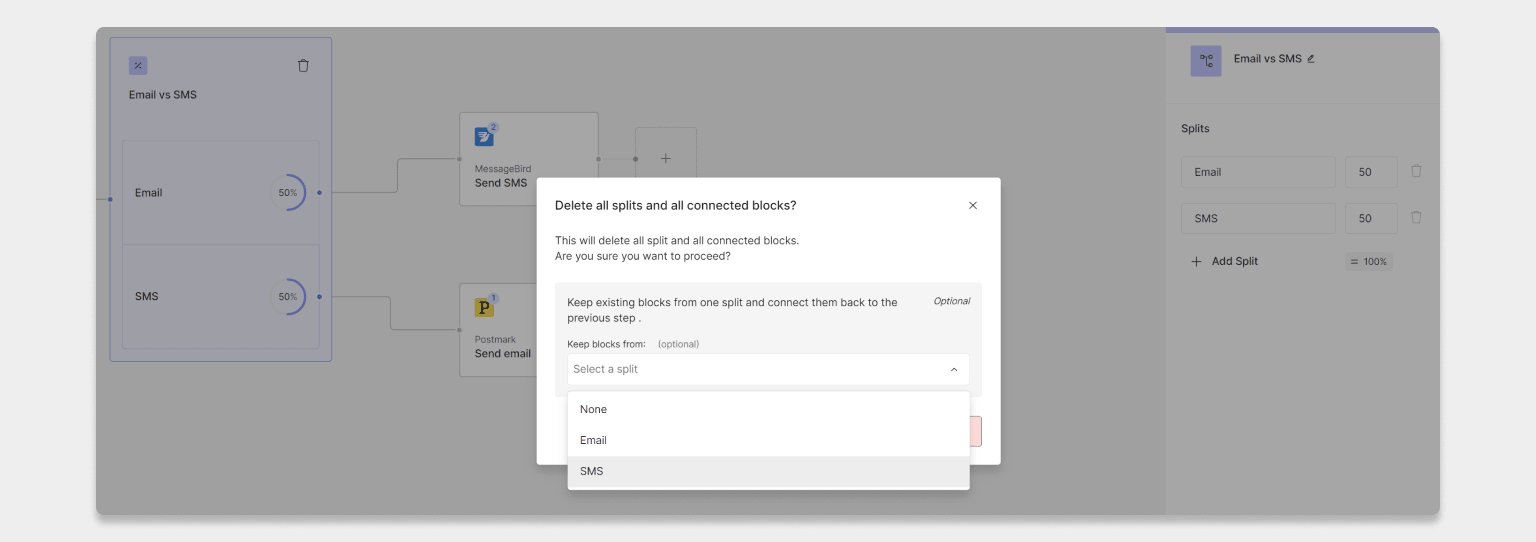
Split Utility
Using the Split Utility
While the Conditions Utility allows you to create routes based on logic using outputs from previous blocks, the Split Utility can create multiple routes to distribute load based on percentages. You can create up to five routes at a time with a flexible distribution depending on your needs, like 50/50, 80/20, 8/15/42/35, etc. This allows for a wide variety of use cases:- A/B/C/.. testing of processors, configurations, third-parties, etc.
- Load distribution for more resilience at high volume.
- Cost optimization, for example sending 80% of traffic to your main provider, but keeping minimum volume commitments and sending the rest to the secondary provider.
- Traffic shifting, start with 100/0, and gradually update over time to 95/5, 90/10, 80/20, etc. until you reach 0/100 and have completely shifted traffic over.
Learn how to analyze A/B test results with Observability.
Setup
What to consider when setting it up the Split Utility:- You can create up to 5 splits, but need at least 2.
- It’s mandatory to use the full 100% distribution across all splits, you can’t save anything less than 100% or anything more than 100%.
- A split can have any value from
0to100- it’s possible to assign0to a split and use it to (temporarily) disable a split.
Removing the block
If you no longer want to use the Split Utility, you can remove it from your workflow. If you still have blocks assigned to splits, a dialog will ask if you want to retain the blocks from a specific split, or delete the entire utility and all subsequent routes.
Delete Split Utility